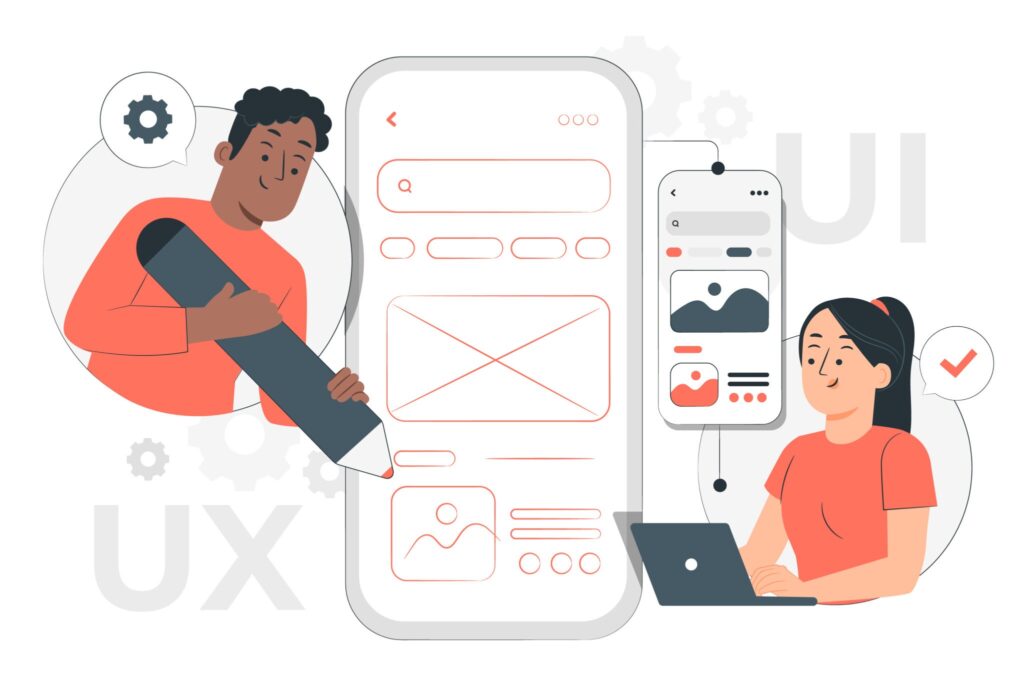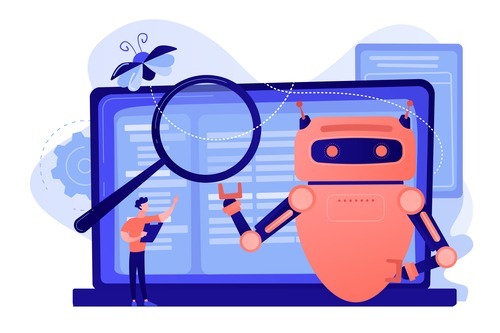Are you frustrated by the persistent challenges that iOS testing and quality assurance brings?? Do you find yourself grappling with user frustration, security concerns, and compatibility issues that could negatively impact your brand, revenue, and growth opportunities?
If the answers to these questions are something you were searching for, then worry not, as you have landed in the right place.
Navigating the complexities of iOS testing and quality assurance is not just beneficial; it’s essential for the long-term success of your business application. By addressing these challenges head-on, you’ll ensure a robust and user-friendly product that stands out in the iOS ecosystem.
At Mallow, our ongoing commitment to addressing the challenges of iOS application development, testing, and quality assurance has established us as a trusted guide for our clients, facilitating their path to success. Our clients have reaped the benefits of our strategic approach, experiencing not just bug-free applications but elevated user experiences that resonate with their target audience.
After reading this article you will gain in-depth insights into navigating the complexities of ensuring a flawless iOS application deployment. From addressing device fragmentation and compatibility issues to delving into the intricacies of testing on diverse iOS versions, this exploration will equip you with practical solutions to common pitfalls. You will discover how to optimise their testing strategies, enhance app performance, and implement robust quality assurance practices tailored to your iOS application.
The increasing demand for high-quality iOS applications
The iOS application ecosystem is witnessing an unprecedented surge in demand, with users increasingly seeking high-quality applications that seamlessly blend innovation with user-centric design. This escalating demand stems from a discerning user base that not only values functionality but also demands a superior user experience. As iOS devices continue to evolve, from iPhones, iPads, iwatch, Appletv, and beyond, the expectations for apps that run seamlessly on these platforms have soared.

The ever-expanding ecosystem of iOS users, coupled with the relentless pursuit of excellence by Apple in its hardware and software, has set a new benchmark for app developers. To thrive in this competitive world of emerging technology, developers must not only meet but exceed user expectations, delivering applications that are not just functional but also intuitive, visually appealing, and meticulously crafted.
What are some common challenges encountered in iOS application testing? And what’s the solution?
UI and UX Testing

Challenges
Ensuring a seamless and visually pleasing user interface across diverse devices demands meticulous testing, especially with varying screen sizes and resolutions.
Solutions
Implement responsive design principles to enhance adaptability. Utilise testing tools simulating different screen sizes to identify potential layout issues. Conduct usability testing to guarantee an optimal user experience on all supported devices, ensuring a consistent and visually appealing interface.
Test the UI to ensure that it’s user-friendly and intuitive. This includes examining the layout, navigation, and visual elements. The user interface should be easy to understand, and users should be able to perform essential tasks without confusion. An essential part of iOS app testing is assessing the responsiveness of your app across different devices and screen sizes. Your app should adapt seamlessly to various iPhone and iPad models. Testing on both newer and older devices will help ensure that users have a consistent experience.
With the vast range of iOS devices, screen sizes, and orientations, manual layout testing can be time-consuming and prone to human error. Automated layout testing tools can help verify that your app’s layout remains consistent across different devices and orientations.As your app evolves, making frequent updates is essential. Automated layout testing allows you to perform efficient regression testing to ensure that new features or changes do not negatively impact the app’s layout. This ensures a consistent and high-quality user experience even with ongoing development.
Performance Testing

Challenges
Performance issues, such as slow load times and app crashes, can significantly impact user experience. Conducting thorough performance testing under various conditions is paramount for optimal functionality.
Solutions
Implement comprehensive performance testing simulating various network conditions. Utilise tools like Xcode Instruments for profiling, memory leak, battery optimisation, data usage and optimising application performance. Regularly analyse and address potential bottlenecks to enhance overall responsiveness, ensuring a smooth and efficient user experience.
One critical challenge in testing iOS applications is effectively monitoring and optimising app performance. This is where Application Performance Monitoring (APM) comes into play. APM tools like SmartLook, Firebase performance test etc, provide you with actionable insights into your application’s behaviour and performance. These insights could range from slow load times, unresponsive UI elements, to high resource consumption. By continuously monitoring and analysing these metrics, you can detect anomalies or discrepancies that might affect user experience and overall app functionality. You need to actively attend to the notifications and alerts generated by the APM system and incorporate the findings into the next version of the app that will be shared with the user.
Security and privacy

Challenges
Ensuring robust security measures to protect user data is a primary concern. Adhering to privacy regulations and identifying potential vulnerabilities demand thorough testing.
Solutions
Incorporate secure coding practices throughout development. Conduct regular security audits and penetration testing to identify and rectify vulnerabilities. Utilise encryption protocols for both data transmission and storage to enhance overall data security, ensuring user privacy and trust. Implement robust data encryption methods to safeguard sensitive user information both in transit and at rest. By using industry-standard encryption protocols, you can protect user data from unauthorised access and breaches, enhancing user trust and data security.
Implement strong user authentication methods, such as biometrics or multi-factor authentication, to ensure that only authorised users can access the app’s sensitive features. Stay vigilant with regular updates and patches to address security vulnerabilities in both your application and any third-party libraries or frameworks you use. Outdated software can be an entry point for attackers.
Conduct regular code reviews to identify and address potential security flaws and vulnerabilities. If your app communicates with external services or APIs, ensure that the data exchange is secure. Implement secure API design practices and use protocols like OAuth for secure access to third-party services.
Testing Automation

Challenges
While automating iOS tests for efficiency is essential, the process can be complex due to scripting and compatibility issues with various testing frameworks.
Solutions
Select an appropriate automation tool compatible with iOS, such as Appium, Lambda Test or XCTest, to streamline the testing process. Develop a robust automation strategy addressing repetitive test scenarios effectively. Regularly update automation scripts to align with evolving app functionalities and frameworks, ensuring efficient and reliable testing processes. When testing the iOS application, it is essential to review the architecture, update test cases after any changes, and ensure that the architecture supports the test cases to maintain a hassle-free testing process.
Manual Testing

Challenges
iOS devices come in various models and screen sizes, making it challenging to cover all possible combinations, leading to potential compatibility issues. Manual testing is prone to human error, which can result in overlooking critical issues or inconsistencies in the application. The monotony of repetitive testing tasks can lead to tester fatigue and decreased accuracy. Manual testing can be resource-intensive, both in terms of time and manpower, impacting project timelines and costs.
Solutions
Prioritise testing on the most popular and representative devices to cover the majority of users. Utilise cloud-based testing services testsigma, Kobiton, Lambda Test, BrowserStack etc. to access a wider range of devices. Create comprehensive test plans and checklists to minimise the chances of human error, ensuring that all test cases are executed consistently. Implement test automation for repetitive and time-consuming test cases, allowing testers to focus on exploratory testing and more critical aspects of the application. Train testers to stay updated with iOS platform changes, best practices, and emerging testing tools and techniques to improve efficiency and effectiveness.
User Feedback and Beta Testing
Challenges
Gathering meaningful user feedback and conducting efficient beta testing are critical for identifying potential issues and improving overall app quality.
Solutions
Implement in-app feedback mechanisms to encourage user input. Utilise beta testing platforms to distribute test versions to a diverse user base for comprehensive feedback. Actively engage with user communities to address concerns promptly and iteratively enhance the app based on real-world usage insights, ensuring a user-centric and high-quality application.
Device Fragmentation
The iOS ecosystem’s device diversity poses a formidable challenge in testing. With a myriad of iPhone and iPad models, ensuring comprehensive coverage through real device testing becomes imperative for accurate assessments.

Challenges
Solutions
To tackle this challenge, develop a strategic device matrix focusing on the most prevalent devices. Supplement real device testing with cloud-based services for broader coverage. Automation tools like BrowserStack, Appium, Apptim, TestSigma can streamline testing processes across a range of real devices, ensuring a robust application on diverse platforms.
Operating System Versions

Challenges
The array of iOS versions in circulation presents a compatibility hurdle. Achieving seamless performance across this spectrum demands meticulous testing across different OS iterations.
Solutions
Prioritise testing on the latest iOS version to align with user trends. Employ virtual machines to test on multiple OS versions concurrently. Regularly update testing environments to accommodate evolving iOS releases and maintain optimal compatibility, ensuring a smooth user experience across diverse versions. With each iOS update, Apple consistently offers developers early access through beta testing programs. It is imperative for the development team to seize this opportunity and thoroughly test the application in the new environment to guarantee its seamless performance and compatibility with the latest iOS version. By actively participating in beta testing, developers can proactively address any potential issues, ensuring that the application remains robust and user-friendly for all iOS users.
Compliance with Apple
Challenges
Adhering to Apple’s stringent guidelines and App Store requirements is paramount. Non-compliance can result in app rejection and significant delays.
Solutions
Stay informed about Apple’s guidelines through continuous monitoring of official documentation. Conduct thorough pre-submission testing to ensure adherence to all requirements. Utilise Apple’s resources and support channels for comprehensive compliance, navigating the stringent app review process seamlessly. Check out this piece of information from Apple’s guidelines for detailed insights about the compliances from Apple.
The Role of Continuous Integration (CI) and Continuous Delivery (CD)
Continuous Integration (CI)
In the ecosystem of iOS development, where multiple devices, screen sizes, and OS versions are prevalent, the need for seamless integration and testing is important. CI automates the integration of code changes into a shared repository, triggering automated builds and tests.
For iOS applications, CI ensures that code changes are promptly validated across various devices and configurations. This accelerates the feedback loop, allowing developers to catch and address issues early in the development process. With each code integration, CI facilitates comprehensive testing, including unit tests, UI and UX tests. This iterative and automated approach not only improves the overall testing process but also contributes to the delivery of high-quality iOS applications.
Continuous Delivery (CD)
Continuous Delivery (CD) extends the benefits of CI by automating the deployment and release processes for iOS applications. In the context of iOS application testing, CD streamlines the path from successful testing to the delivery of the application to end-users. Once code changes pass through rigorous testing in a CI environment, CD automates the deployment pipeline, ensuring that the validated application is seamlessly delivered to users. This systematic approach reduces the risk of manual errors in the deployment process and allows for consistent and reliable releases.
CD also facilitates the implementation of canary releases and A/B testing, enabling developers to monitor the real-world impact of changes. In the dynamic iOS ecosystem, where rapid updates and user satisfaction are crucial, CD ensures that the testing efforts seamlessly translate into a reliable and efficient delivery pipeline, ultimately contributing to a positive user experience.
Best practices for iOS testing and quality assurance
Below mentioned is a checklist which will be your go-to guide on implementing the best practices for testing your iOS application:
✅ Ensure testing covers various devices, screen sizes, and OS versions. Include unit tests, integration tests, and UI tests for thorough coverage.
✅ Implement automated testing for efficiency and repeatability. Utilise frameworks like XCTest or XCUITest for iOS automation.
✅ Prioritise testing on the most popular and relevant iOS devices. Leverage cloud-based testing services for broader device coverage.
✅ Implement secure coding practices throughout development. Conduct regular security audits and penetration testing.
✅ Conduct performance testing under various network conditions.
✅ Integrate APM tools, attend the alerts which includes slowness, screen freeze or screen rendering issues and release the next version with those issues attended.
✅ Ensure responsive design principles for adaptability. Conduct usability testing to validate a seamless user experience.
✅ Integrate analytics tools for user behaviour tracking. Set up monitoring for performance metrics and error tracking.
✅ Stay informed about and adhere to Apple’s guidelines. Conduct pre-submission testing to ensure compliance.
✅ Implement in-app feedback mechanisms for user input. Actively engage with user communities for insights and improvements.
✅ Integrate version control with CI for seamless collaboration.
What quality testing methods can you follow for your application?
By now, you’ve gained a comprehensive understanding of the significant challenges inherent in testing iOS applications and the strategic approaches to navigate through them seamlessly.
For ensuring the utmost quality of your iOS applications, it is essential for you to look into a detailed exploration of quality testing methodologies, as highlighted in our latest article on quality testing methods.
Discover insights, best practices, strategical recommendations and testing approaches that will empower you to implement robust testing methodologies, ensuring your application not only meets but exceeds the expectations of your users.
Still, feeling struck or wondering where to start? Feel free to reach out to us.
Author
Yogesh Murugesh
Yogesh is an accomplished Senior Technical Lead at Mallow, boasting over 11 years of invaluable expertise in the realm of application development. With an extensive background spanning diverse domains, he has consistently delivered applications of the highest calibre. Yogesh's commitment to quality and excellence shines through in every project he undertakes. His career journey is marked by a proven track record of successfully crafting applications that not only meet but often exceed industry standards. His ability to navigate through various domains showcases his adaptability and keen problem-solving skills. Yogesh's contributions have consistently played a pivotal role in driving technological innovation and advancement within his field. Beyond his professional pursuits, Yogesh finds solace and joy in various activities. An ardent cricket enthusiast, he embraces the team spirit and strategic thinking that the sport demands. During leisure moments, he indulges in watching movies, allowing himself to be captivated by different narratives and genres. Moreover, Yogesh cherishes quality time with his child, relishing the role of a devoted parent.



